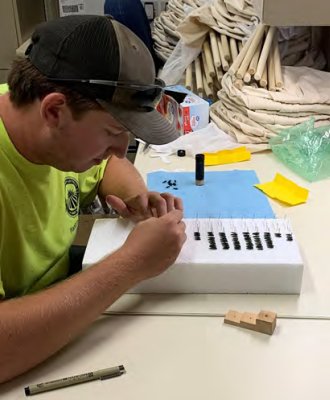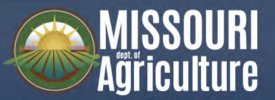AgEBB-MU CAFNR Extension
Green Horizons
Volume 24, Number 3
Fall 2020
Employee Spotlight:
Getting to Know a Forest Pest Surveyor Intern- Brayden Howard
Sarah J. Phipps, State Survey Coordinator, Missouri Department of Agriculture, Plant Industries
 |
"I grew up in a rural community in Hartsburg, MO. I'm attending the University of Missouri-Columbia with a major in Forestry and will graduate in May 2021."
Why does the forestry field interest you?
I decided to go into the forestry field since I have always enjoyed working and spending time outdoors and the woods have always been a place that has interested me. When I took my Dendrology class, it really showcased that forests are more than just trees and inspired me to want to learn more about the field.
What internship position did you work this summer?
I worked in the Plant Industries Division at the Missouri Department of Agriculture based out of Jefferson City. For this job, I was hired to trap and survey for invasive insects affecting Missouri's trees or ones that have the potential threat of becoming established here in Missouri.
What insects did you survey for during your internship?
I surveyed for the Asian longhorn beetle, emerald ash borer, spotted lanternfly, oak splendor beetle, gold spotted oak borer and assisted with the gypsy moth survey. I also surveyed for the invasive plant-tree of heaven because this tree species plays a very important role in the spotted lanternfly life cycle, as it is one of the few tree species that they will lay their eggs on.
 |
Processing the emerald ash borers that were |
What types of different survey techniques did you learn?
I learned various survey techniques this field season. For the first week of my internship, I conducted visual surveys on maple and other hardwood trees looking for traces of the Asian longhorned beetle. In early spring, I placed purple prism traps with an attractant lure in stressed ash trees to check for emerald ash borers in counties where they had not yet been found. In early summer, I placed purple prism traps in oak trees to check for oak splendour beetle and gold spotted oak borer. I wrapped up the survey season by inspecting tree of heaven locations that were identified earlier in the year to verify that no sap feeding spotted lanternflies were present.
What is something you learned?
I learned that the earlier we start looking for an invasive pest, the earlier they will be found and the sooner an action can be put into place to help stop and lower the negative impact on the trees in the state.
What is the most rewarding part of your internship?
The most rewarding part of the internship, although was not very good for the trees, was when I found emerald ash borer in my traps. This was good for me because when I found EAB, I knew that I was doing my job correctly.
 |
What are your future career plans and describe how you anticipate using your experience gained from your internship in your future job?
My future career plan is to get a job that utilizes what I have learned within my forestry degree. This internship has provided me with the knowledge of various ways to survey for invasive forest pests and the understanding of the biology, insect pheromones, and life cycles of the various pests to aid with the success of the survey.
How did the Covid virus impact your survey season and what precautions did you have to take while out in the field?
The biggest impact on the season was not being able to place emerald ash borer traps in the Springfield area because of overnight stays in hotels. Also, when people would inquire about the work I was doing in the field, we would have to maintain a safe distance while talking to each other. Also, the addition of having to wear mask and gloves when going into stores and filling the vehicle up with gas.
What was the outcomes of your field season?
This field season, I confirmed emerald ash borer in five new counties: Carroll, Johnson, Livingston, Monroe and Sullivan counties with a sixth county, Saline county, confirmed by Lee Conner. Thankfully, no specimens were trapped or signs or symptoms observed from Asian longhorned beetle, oak splendour beetle, gold spotted oak borer or spotted lanternfly. The gypsy moth survey is still ongoing. I urge you to keep an eye out for these invasive pests as more eyes looking encourages early detection of these pests!
 |
What do you wish the average citizen understood about your work?
This job is very important for the future to help protect our forest because they are valuable.
How would you describe the "big picture" purpose of the Plant Pest Control program?
The Plant Pest Control Program works to help get a head start on insect and disease pests that threaten Missouri's agricultural and forest resources by conducting early detection surveys. Program staff also oversee annual certification and inspection of nurseries and greenhouses and certifies Missouri plant commodities for export.
